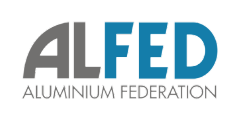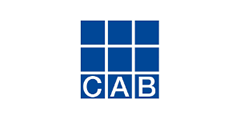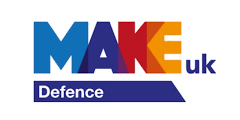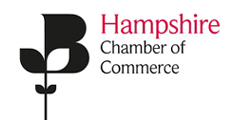

In today’s environmentally-conscious world, sustainability is more than a buzzword – it’s a necessity, particularly for industries involved in large-scale commercial projects. Businesses across various sectors are looking for ways to reduce their environmental impact while maintaining the quality and durability of their buildings, their fixtures and fittings or their products. One of the most effective ways to achieve this balance is through powder coating, an eco-friendly alternative to traditional liquid paints and finishes.
Tomburn, a specialist in industrial finishes, provides advanced powder coating solutions designed for commercial projects. One of the standout benefits of powder coating is its VOC-free (volatile organic compound-free) nature, offering significant advantages not only for the environment but also for worker safety and project longevity. But what exactly are VOCs and why should commercial projects be steering away from traditional coatings in favour of powder coating?
Volatile Organic Compounds (VOCs) are chemicals commonly found in conventional liquid paints, stains and coatings. When these compounds evaporate into the air they release gases that can contribute to a range of environmental and health problems. VOCs are one of the primary contributors to air pollution, forming ground-level ozone and contributing to the creation of smog, which can exacerbate respiratory problems and degrade air quality.
In addition to harming the environment, VOCs can also pose significant health risks to workers and end-users. Prolonged exposure to high levels of VOCs has been linked to respiratory issues, headaches, dizziness and in some cases, long-term health conditions such as liver or kidney damage. For businesses focused on sustainability, safety and long-term health, minimizing VOC exposure is a priority.
One of the most compelling reasons to opt for powder coating is that it is virtually VOC-free. Unlike traditional liquid paints, which rely on solvents to maintain their liquid form and enable easy application, powder coating uses no solvents at all. The coating is applied as a dry powder and then heated, creating a smooth, durable finish without the need for harmful chemicals. This eliminates the release of VOCs into the atmosphere and significantly reduces the environmental impact of the coating process.
In addition to its VOC-free formulation powder coating offers other environmental benefits. Since the powder can be applied with precision and efficiency there is minimal waste during the process. Any overspray can be collected and reused, reducing the overall consumption of materials.
While traditional liquid paints and coatings are still commonly used in many industries, they come with significant environmental and safety drawbacks, primarily due to their reliance on solvents and chemicals that contain VOCs.
1. Solvent-based paints: These coatings use organic solvents that contain VOCs, which evaporate as the paint dries. The more solvents involved, the higher the VOC content, leading to air pollution and the potential for toxic exposure. Furthermore, any spills or mishandling of these products can contribute to soil and water contamination.
2. Water-based paints: While water-based alternatives may seem like a safer choice, they are not entirely VOC-free. Many water-based coatings still contain low levels of VOCs and require additional chemical additives to enhance durability and drying times. What’s more, water-based paints are often less durable than powder coatings, meaning surfaces may require more frequent refinishing, which increases waste over time.
3. High-VOC finishes: Some specialised coatings, such as lacquers and varnishes, can have exceptionally high VOC content. These coatings not only contribute to air pollution but can also result in hazardous working conditions in industrial settings, particularly when applied in large quantities for commercial projects.
Beyond its environmental credentials, powder coating offers numerous practical advantages, particularly for commercial projects where durability, quality and efficiency are critical.
– Durability: Powder coatings are highly resistant to chipping, scratching and fading – making them ideal for commercial applications such as architectural structures, industrial equipment and much more. Their long-lasting nature means fewer touch-ups and replacements, contributing to long-term sustainability.
– Cost-efficiency: Because powder coating is applied in a single, uniform layer and doesn’t require multiple coats, it’s a time-efficient and cost-effective solution. The process can be automated, ensuring consistency across large-scale projects.
– Variety and aesthetics: Powder coating offers a wide range of colour options, textures and finishes. Whether your commercial project demands sleek, modern aesthetics or durable, corrosion-resistant finishes, powder coating provides the versatility to meet various design requirements without sacrificing quality.
Choosing the right coating solution is about more than just aesthetics and performance – it’s about making responsible choices that benefit both the environment and the people involved in your project. By choosing Tomburn’s VOC-free powder coating solutions you not only minimise your environmental impact but also ensure a safer, healthier working environment for your team.
As industries shift towards greener solutions, powder coating stands out as a sustainable, efficient and durable option. With no VOC emissions, minimal waste and exceptional performance it’s clear that powder coating is the future of commercial finishes.
Let Tomburn help you make the environmentally responsible choice for your next commercial project. With a commitment to quality and sustainability, we’re here to offer the powder coating expertise you need to bring your vision to life – without compromising on environmental impact.
For your next industrial finish, contact Tomburn and discover the power of powder coating – a finish that’s as kind to the environment as it is to your project.

Find out how Tomburn has helped transform our clients buildings, products and projects.
Find out more




